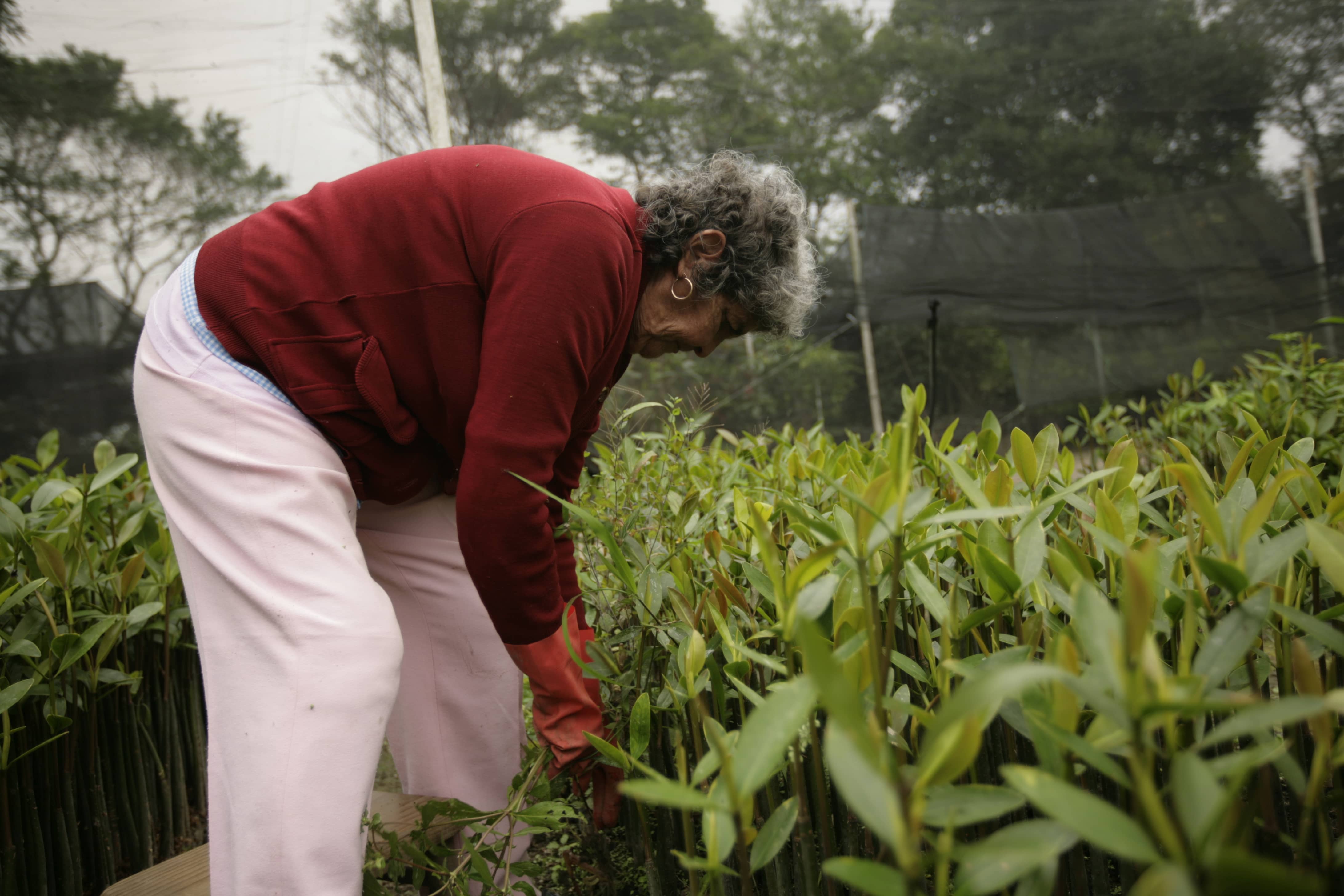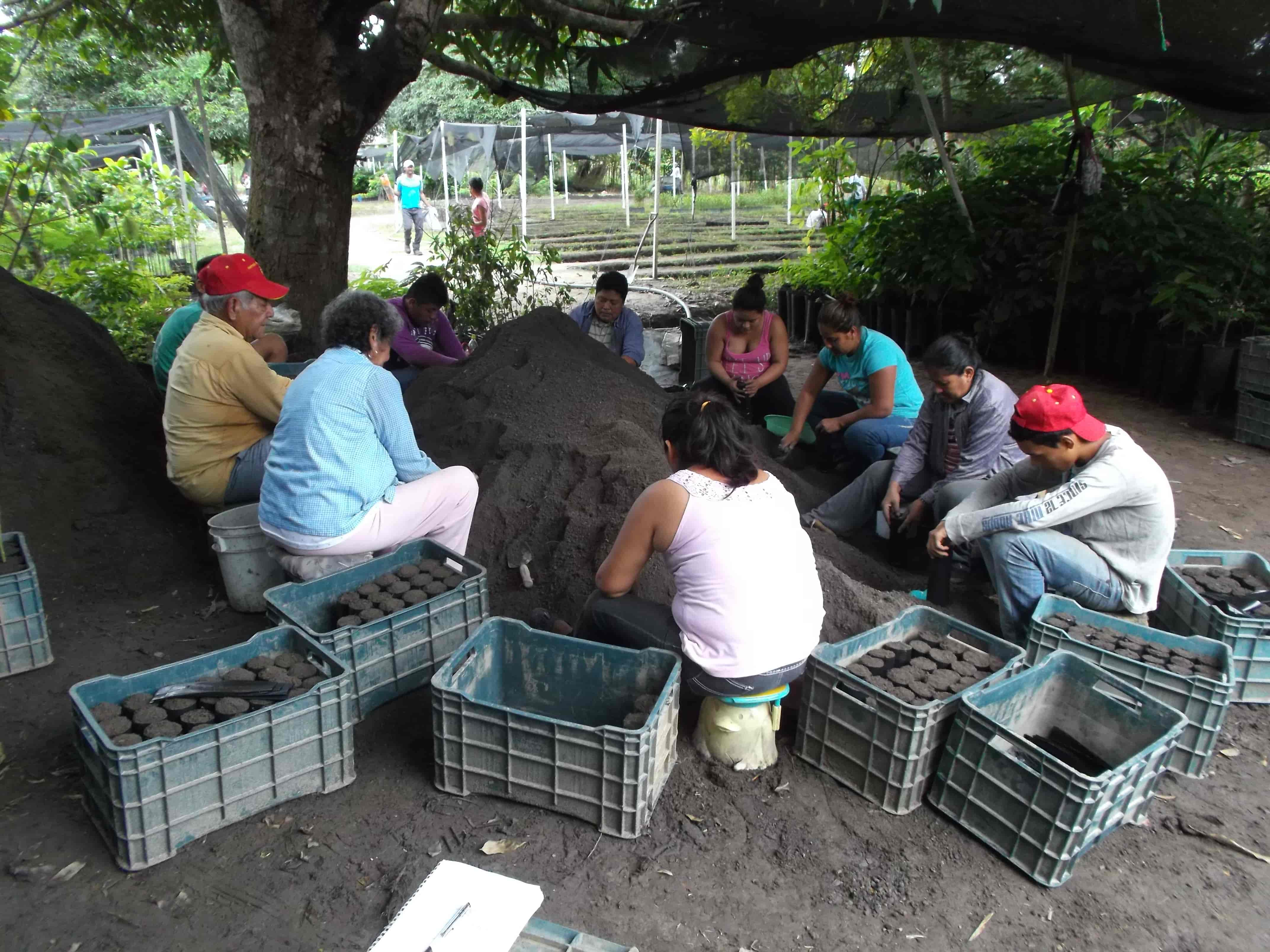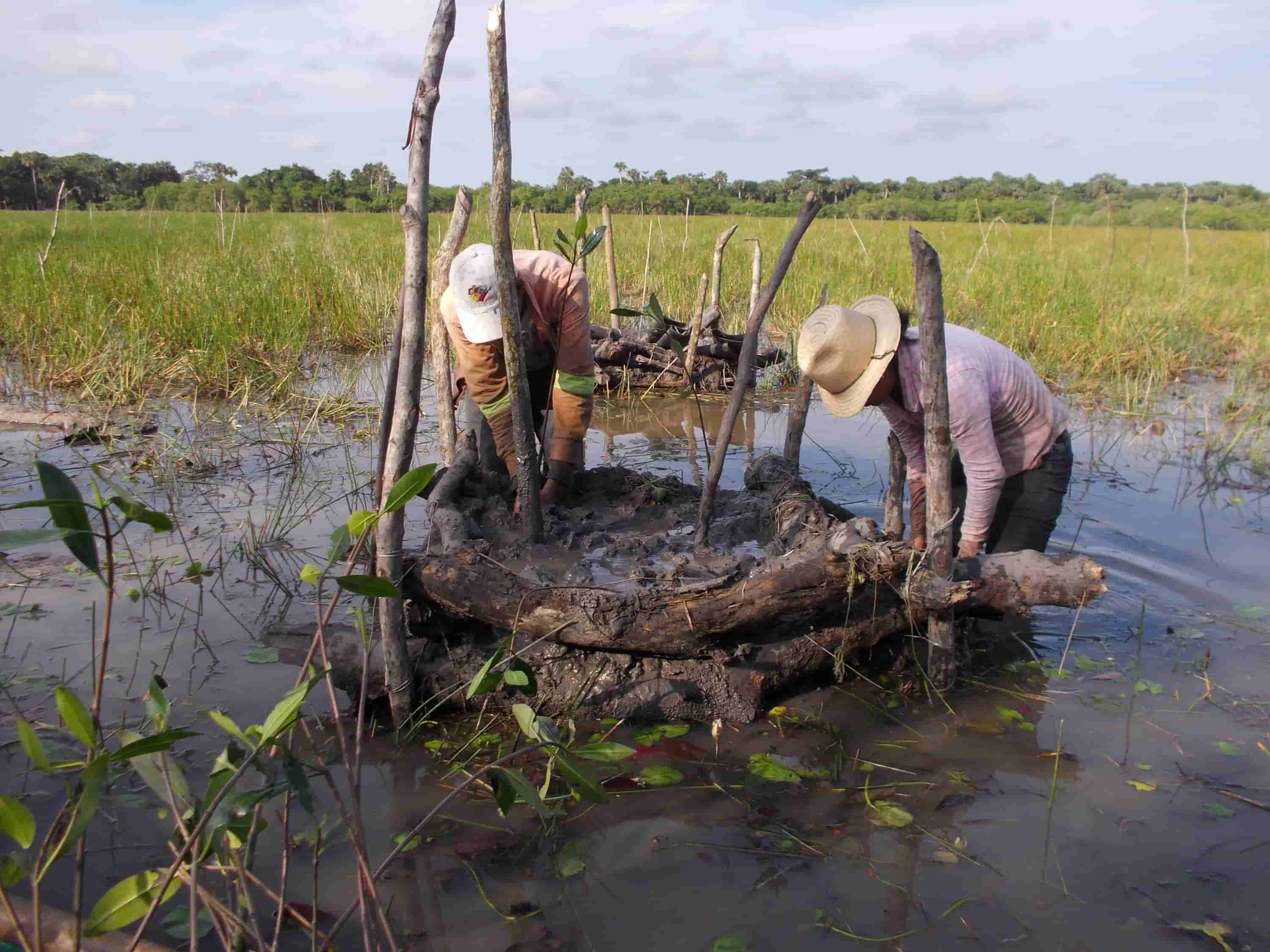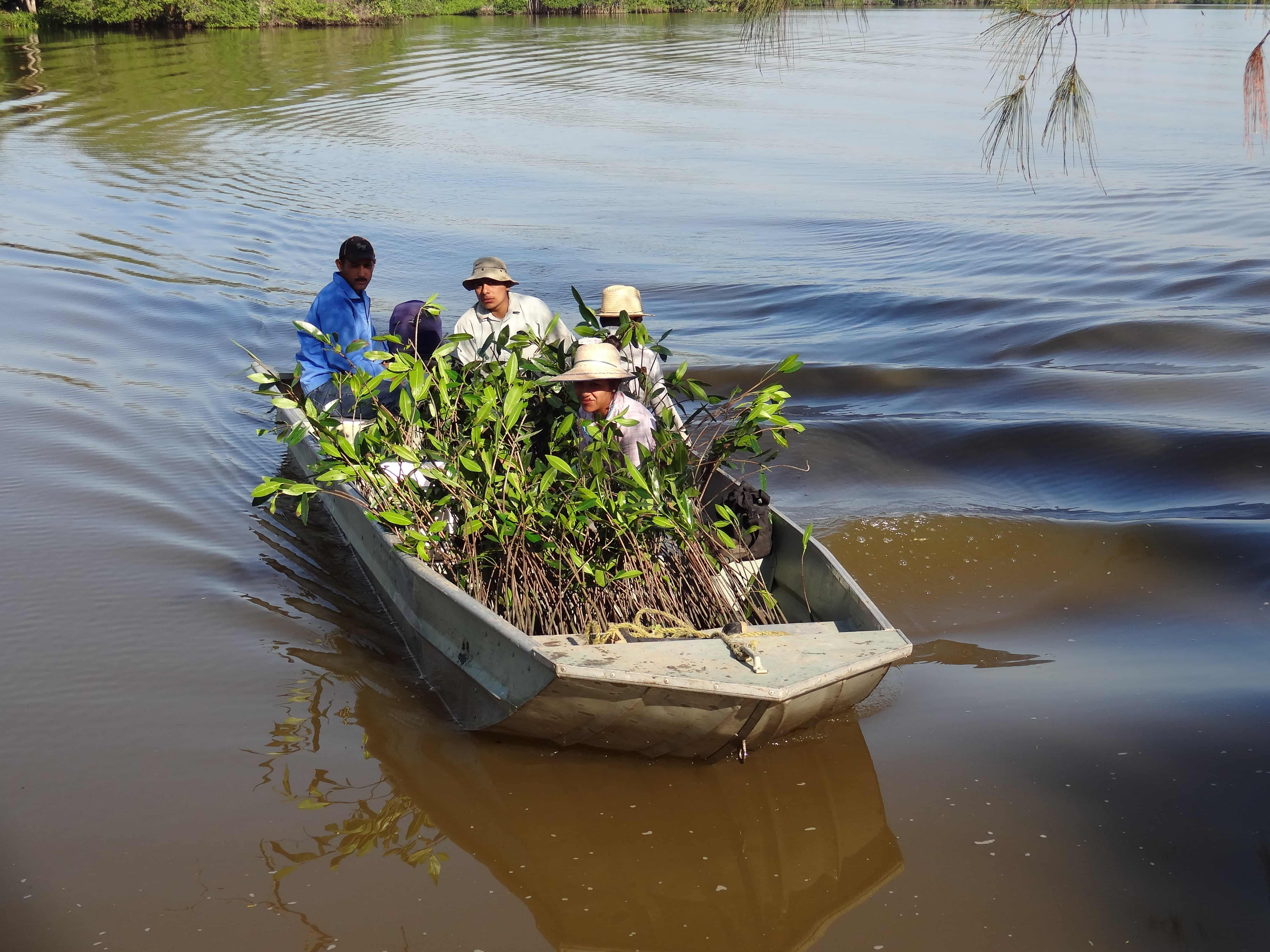




By making an alliance with a local civil association with a permanent presence in the area, INECC was able to better focus human and economic resources on the reforestation of 25 hectares of mangroves and the 3km clearing of channels for the restitution of the water flows of the wetland.
Mangrove reforestation was carried out using the "chinampas" technique (1 x 1m floating mud mounds) which served as a platform for the optimum growth of mangrove seedlings.
This technique, previously used in other neighboring areas, includes an ecological monitoring phase as well as geo-referenced photographic monitoring points to identify the evolution of the monthly growth of the seedlings in each of the almost six thousand established chinampas.
In addition, the direct participation of the communities in the activities provided empirical knowledge about the particularities of the land, and essential labor to dig open, by hand, the channels. The combination of technical and empirical knowledge has created evidence for the ecological modification of the landscape: the establishment of the chinampas has elevated the topography of the site, and the hydrological flows have brought nutrients and oxygen, creating ecological niches that the species occupy to restore the trophic chain.
- Permanent and committed support from local NGOs with experience in community-based social work and in-depth knowledge of the area;
- Sufficient economic and human resources to be able to employ local communities to carry out rehabilitation work;
- Sufficient experience and empirical knowledge to be able to implement the technique of "chinampas";
- Available land under protection schemes, to carry out wetland management and conservation strategies.
- Per-diem payments to community members as an incentive for taking part in adaptation project implementation (restitution of mangroves and hydrological flows) have been considered by some of the project implementers as a successful way of ensuring active participation, and can work well and augment marginal incomes. The risks of relying on this approach, however, is that the strategy becomes unsustainable if the source of money dries up and active community participation become predicated on the receipt of payments for participating.
- Problems for mangrove systems can be exacerbated by climatic events such as tropical storms that destroy parts of the mangrove. However, equally serious chronic problems can be caused by upstream activities, such as a reduction in river flows, due to the excessive extraction of water for agroindustrial and livestock purposes, which increase the problems of salinity and pollution in the mangrove system.